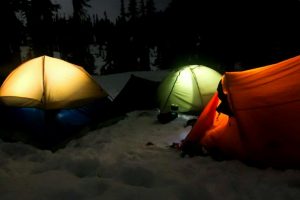The Origins of Evil
Every night, the village people gathered around the fire and told stories. Tales were told of the strange lands, of heroes and mythical creatures, or of everyday happenings—no tale was too small or too great for the gathering. This tradition bred many great story tellers, but one in particular could create whole universes with his words and hold the attention of even the most restless mind. Let’s call him Tom. At this time, Tom was writing a story that was quite different from those he usually told, and that made him nervous.
One particular night, a stranger joined the villagers around the fire and asked them to entertain him with tales. He promised a wonderful prize to the person who could tell the best story. At the end of the night, the stranger awarded Tom a small flask as his prize for the evening’s best tale. The stranger told the storyteller that the contents of the flask were made with the world’s finest ingredients, and that it would surely be the best thing that he had ever tasted.

Tom drank from the flask the next day, enjoying the taste of the concoction immensely.
“Today is going to be a great day,” he said.
What he didn’t know was that the stranger had accidentally given him a Truth Serum, which rendered everything Tom said true. And so, Tom had a great day.
Because things were going so smoothly that day, Tom decided that he would tell his new story at that night’s fire.
It was a story full of darkness, violence, and tragedy. His audience was rightfully fearful, but Tom had unwittingly released all of these awful elements unto the world. Little did he know, that once spoken aloud, the words would come true.
So beware, once a story is told, it can never be taken back.
(It also wouldn’t hurt to be wary of drinks given to you from strangers.)
* * *
Having written the story out first, it was interesting to see what alterations were made when telling the story. I found that the way I told the story was quite a bit more informal, and I definitely put emphasis in certain places of the story that don’t come across in print. My creative writing teacher emphasized the way one tells a story is just as important as the contents of the story.
Depending on where I was when I told the story, I added or took away details from the narrative. I told this story on two separate occasions, once when I was walking home with a friend and another when I was having drinks. It was late and dark when we were walking home and the story carried a more ominous tone. The second time I told the story, it was quite lighthearted and a bit goofy. I was interrupted a few times and asked questions to clarify certain parts of the story.
It’s an interesting concept that stories do not belong to the person who created them. Once put out into the world, people of all backgrounds will derive meaning from them regardless of the intent of the author. Stories have the ability to change people, and vice versa.
Works Cited
King, Thomas. The Truth About Stories: A Native Narrative. Peterbough: Anansi Press. 2003. Print.
This American Life. “David Rakoff in “This American Life: The Invisible Made Visible”” NPR, National Public Radio. Web. 30 May 2016.
Zak, Paul J. “How Stories Change the Brain.” 17 Dec 2013. The Greater Good Science Center. University of California, Berkeley. Web. 30 May 2016.


 This is a blog created for ENGL470. The course looks to examine European and Indigenous narratives in Canadian literature, and how they contribute to the notion of identity.
This is a blog created for ENGL470. The course looks to examine European and Indigenous narratives in Canadian literature, and how they contribute to the notion of identity.